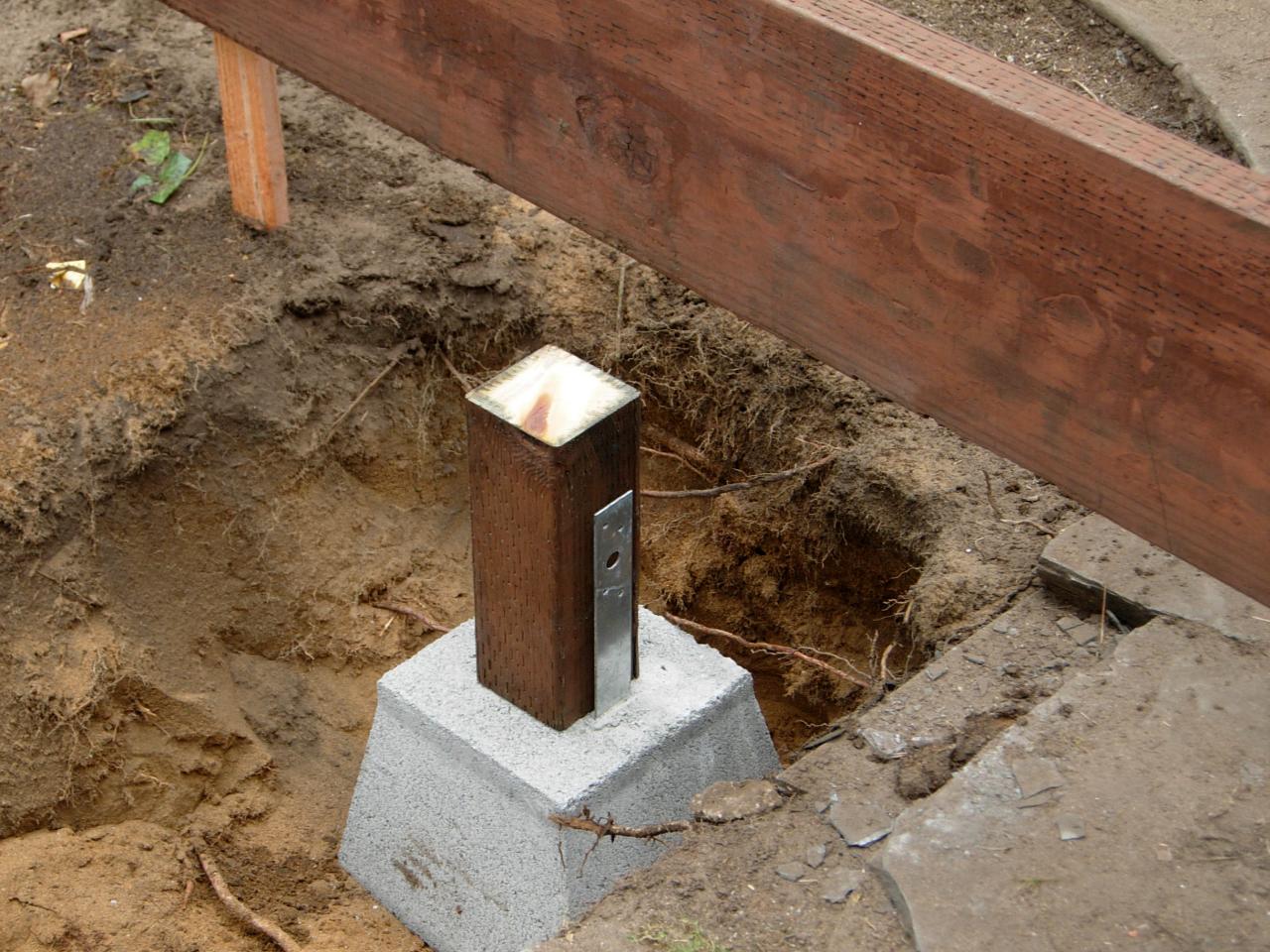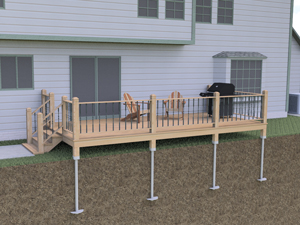Engineered for Success: The Scientific Research Behind Robust and Resistant Deck Footings
Engineered for Success: The Scientific Research Behind Robust and Resistant Deck Footings
Blog Article
Choosing the Right Deck Footings for Security and Durability
When it concerns constructing a deck, one of one of the most vital choices you will certainly make is choosing the best footings for security and sturdiness. The longevity and safety and security of your deck depend greatly on the sort of grounds you choose, as they provide the important support and security to withstand the examination of time. With a myriad of options readily available, it can be frustrating to figure out which footings are best fit for your specific requirements. In this discussion, we will certainly check out the various kinds of deck grounds, think about the vital aspects to weigh when choosing, and explore the pros and disadvantages of various choices. By the end, you will certainly have a clearer understanding of the options handy and be much better furnished to make an educated decision for your deck job.
Sorts Of Deck Grounds
These grounds are composed of a cylindrical hole filled up with concrete, which supplies a strong structure for the deck articles. Concrete pier grounds are relatively easy to install and offer outstanding stability, making them a preferred option for numerous deck projects.
These grounds are set up by screwing them into the ground, which develops a safe and secure structure for the deck. They also permit for very easy modification and leveling of the deck if required.
Additionally, some home builders select precast concrete footings. These grounds are constructed from durable concrete and can be found in different sizes and shapes to accommodate different deck designs. Precast concrete grounds are convenient to mount and supply a stable base for the deck framework.
Lastly, another alternative is the post-in-anchor footing system. This kind of footing involves driving a steel anchor right into the ground and connecting it to the deck post. It uses versatility in terms of placing the deck messages and appropriates for decks with lightweight frameworks.
When picking the ideal sort of deck footing, it is important to consider aspects such as soil conditions, deck lots, and neighborhood building regulations (Deck Footings). Consulting with a specialist specialist or structural engineer can aid ensure the proper ground is selected for a steady and secure deck
Factors to Think About When Choosing Footings
When picking the ideal footings for a deck, it is vital to carefully think about different variables such as dirt problems, deck lots, and adherence to local building regulations. These factors play a considerable function in making certain the security and sturdiness of the deck framework.
The kind of dirt on which the deck will certainly be developed establishes the kind of grounds needed. On the other hand, decks built on clay or expansive dirts might call for footings that can fit the soil's tendency to broaden and contract.
Another vital variable is the deck tons. The weight of the deck, consisting of the products used and any kind of possible real-time tons such as furnishings or gatherings, must be taken into consideration when choosing footings. The footings must be made to birth the weight of the deck and distribute it equally to stop any structural issues or failings.
Finally, adherence to local building regulations is vital. Building ordinance vary from area to region, and it is vital to abide with the particular demands set by the regional authorities. Deck Footings. These codes guarantee that the deck is constructed safely and fulfills the necessary criteria for structural stability and load-bearing capacity
Concrete Grounds: Advantages And Disadvantages

When made use of as the foundation for a deck,Concrete footings use numerous advantages and drawbacks. On the silver lining, concrete grounds give outstanding stability and toughness. Concrete is a solid and rigid product that can support heavy loads more and hold up against various weather. It likewise has a lengthy life-span, making it a dependable option for long-lasting usage.
Another advantage of concrete footings is their flexibility. They can be poured into different sizes and shapes to accommodate numerous deck designs and arrangements. Concrete footings can be customized to fit the particular needs and requirements of the deck framework.
Nonetheless, there are additionally some disadvantages to utilizing concrete footings. One significant negative aspect is the price and labor entailed in their installment. Concrete grounds call for excavation and typically need the help of heavy equipment. This can raise the total expense of the deck project and might call for expert help.

Helical Piers Vs. Sonotubes: Which Is Better?
In taking into consideration the structure choices for a deck, the comparison between helical piers and sonotubes is vital in determining the superior choice. They are turned right into the ground making use of hydraulic equipment, giving a secure and long lasting foundation for the deck.
The helical plates on the piers develop a strong grasp with the soil, preventing any activity or shifting of the deck. Sonotubes, on the other hand, count entirely on the concrete loading for stability, which might not use the exact same level of stamina and resistance.
In regards to setup, helical piers are reasonably simpler and faster to mount contrasted to sonotubes. The hydraulic equipment used to turn the piers right into the ground guarantees a effective and fast process. Sonotubes, on the various other hand, call for digging holes and putting concrete, which can be labor-intensive and taxing.
Additionally, helical piers are a more functional alternative. If needed, they can be made use of in various dirt conditions and can be changed or enhanced. Sonotubes, on the various other hand, may require extra assistance, such as rebar, in specific soil problems or locations with high lots requirements.
Selecting the Right Footings for Your Deck's Measurements
For optimal structural honesty, it is important to thoroughly choose the ideal footings that go line up with the measurements of your deck. The measurements of your deck, including its height, width, and length, play a considerable role in establishing the about his type and dimension of grounds called for.
When picking footings for your deck, it is very important to take into consideration the load-bearing capacity of the dirt. The weight of the deck, incorporated with the weight of any kind of furnishings or individuals on it, applies a significant force on the grounds (Deck Footings). Therefore, it is crucial to choose grounds that can properly support this weight without sinking or moving over time.
Bigger decks with higher measurements call for bigger footings to supply adequate security and support. The form of the grounds, whether they are square or rounded, depends on the design and layout of the deck.
Conclusion
In conclusion, selecting the right deck footings is important for making certain stability and durability. Elements such as the kind of grounds, the deck's dimensions, and the pros and cons of different alternatives must be taken into consideration.
These grounds consist of a cylindrical hole filled up with concrete, which supplies a solid structure for the deck messages. Concrete pier footings are fairly easy to set up and offer outstanding security, making them a preferred selection for several deck tasks.
Precast concrete grounds are hassle-free to mount and offer a steady base for the deck structure.
It provides flexibility in terms of positioning the deck posts and is suitable for decks with lightweight frameworks.
Concrete grounds use a number of advantages and drawbacks when used as the structure for a deck.
Report this page